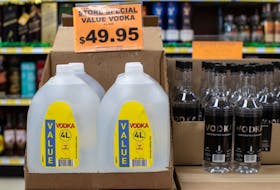Instead of a column, three short notes on the most interesting COVID-19 science tidbits I’ve seen this week.
Western newspapers are confirming something that was hitherto the subject of speculation: the remarkable testing volumes China is claiming, in keeping tabs on ground-zero city of Wuhan, are being accomplished with the help of pooling of samples. Two weeks ago the communist republic declared a “ten-day battle” to screen nearly all of the 11 million residents of Wuhan for the SARS-CoV-2 virus.
With health-care workers overrunning the city and loudspeakers urging the public to get tested (while slyly threatening the “social credit” bona fides of anyone who doesn’t like the idea), the government has checked more than nine million people, according to the Wall Street Journal . Pooled testing — combining samples from a few patients and checking all at once for viral RNA, allowing all the contributors to be cleared at once if the pooled sample is negative — seems to have been crucial to the effort. (This idea was previously explained in your National Post in March.)
Offshore critics are suggesting that the “battle” may be authoritarian overkill that does more harm than good. Health economists, usually skeptical of population screening for disease, are not necessarily huge fans of testing jihads even in the COVID-19 setting. But it is worth remarking that sample-pooling methods remain no more than an interesting possibility in struggling Ontario , where no one doubts that higher testing volumes are needed.
An astonishing preprint from Yale University health researchers — working with environmental engineers and the Connecticut Agricultural Experimental Station — suggests that RNA testing of sewage may provide a useful “leading indicator” for COVID-19 outbreaks. From March 19 to May 1, a team collected — let’s speak frankly here — crap from the wastewater treatment facility in Yale’s home city of New Haven, Conn. The waste was sampled, and the day-to-day concentration of the SARS-CoV-2 virus in New Haven poo turned out to track the future levels of both local COVID-19 cases (seven days ahead) and local COVID-19 hospital admissions (three days ahead) with amazing accuracy.
The eye-popping statistics may not be as impressive as they look. The poop data just generated a bell-shaped curve that prefigured the bell-shaped curve of new cases and hospitalizations, so any natural process that happened to follow a bell curve with a peak around Apr. 8 would “perform” about as well. Does New Haven have cherry blossoms?
This study needs to be replicated in a variety of places, ideally with different-shaped epidemiological curves. But after weeks of following testing numbers that are essentially backward-looking indicators of disease prevalence in your province or your city, you can probably understand why the possible existence of a highly accurate, easily measured forward-looking indicator is exciting.
Meanwhile, weird news arrives from researchers looking for COVID-19 in the UK Biobank , a dataset containing genomes of hundreds of thousands of Brits which are linked to National Health Service records. The cruel toll of COVID-19 among sufferers of dementia got some doctors wondering about the “apolipoprotein E” (APOE) protein, whose production in the human body is controlled by a gene on our 19th chromosome pair.
A particular variant of the APOE gene, the epsilon-4 allele, is known to be correlated, in Caucasians, with terrifyingly high rates of dementia and Alzheimer’s. Another allele, the epsilon-2 flavour, seems to positively defend against Alzheimer’s. APOE’s main “job” in the body is fat metabolization, so no one really knows what’s going on here, especially with fundamental theories about Alzheimer’s disease in a state of turbulence.
I didn’t notice that this little notebook had a Connecticut theme, but the preprint describing the search for APOE in the Biobank is a collaboration between the University of Connecticut and doctors in Exeter. Basically they hit paydirt. Looking only at Biobank genomes from participants of European descent, of which they had about 400,000, the doctors found that people having two copies of epsilon-4 in the chromosome pair had about twice the odds of having tested positive for COVID-19.
Since epsilon-4 is positively correlated with Alzheimer’s and other diseases, the doctors took patients known to have those problems out of the dataset, in case those conditions were confounding their analysis, and they re-ran the numbers. The odds ratio stayed pretty much the same. They threw close genetic relatives out of the sample to make sure familial clustering wasn’t throwing off their estimates: again, same odds ratio.
This is still rough work, and all the caveats that go with a scientific research preprint still apply. The reasons it’s intriguing are, one, the finding is a sort of inauguration of an era of research on human genes and COVID-19; two, APOE is “co-expressed” in the lungs with ACE2, the protein that the virus is thought to target, which may provide some further clue to its “mechanistic” attack method; and three, the APOE alleles vary widely in incidence among the ethnic populations of the world, with the funky harmful ones more common in groups with evolutionary histories situated very near and very far from the equator. So this result could eventually help us explain why different countries, and different ethnic groups within countries, are experiencing different effects from the virus.
National Post
Twitter.com/ColbyCosh
Copyright Postmedia Network Inc., 2020








